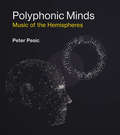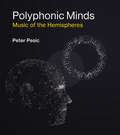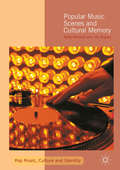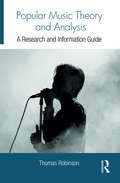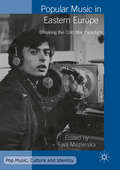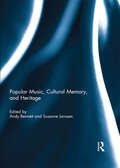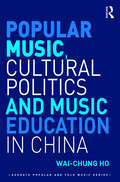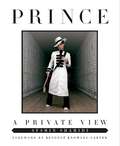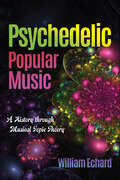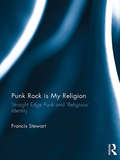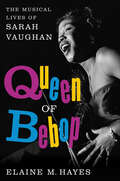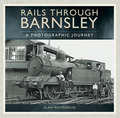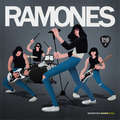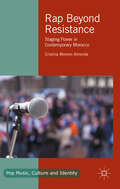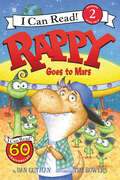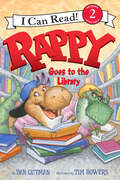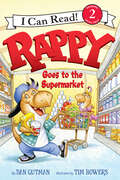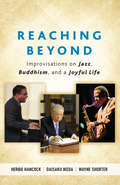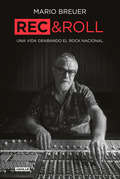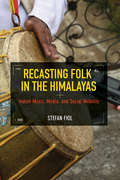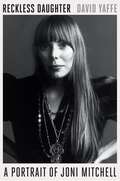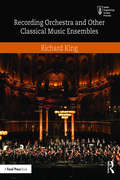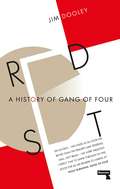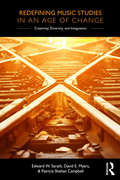- Table View
- List View
Polyphonic Minds: Music of the Hemispheres
by Peter PesicPolyphony -- the interweaving of simultaneous sounds -- is a crucial aspect of music that has deep implications for how we understand the mind. In Polyphonic Minds, Peter Pesic examines the history and significance of "polyphonicity" -- of "many-voicedness" -- in human experience. Pesic presents the emergence of Western polyphony, its flowering, its horizons, and the perspective it offers on our own polyphonic brains. When we listen to polyphonic music, how is it that we can hear several different things at once? How does a single mind experience those things as a unity (a motet, a fugue) rather than an incoherent jumble? Pesic argues that polyphony raises fundamental issues for philosophy, theology, literature, psychology, and neuroscience -- all searching for the apparent unity of consciousness in the midst of multiple simultaneous experiences. After tracing the development of polyphony in Western music from ninth-century church music through the experimental compositions of Glenn Gould and John Cage, Pesic considers the analogous activity within the brain, the polyphonic "music of the hemispheres" that shapes brain states from sleep to awakening. He discusses how neuroscientists draw on concepts from polyphony to describe the "neural orchestra" of the brain. Pesic's story begins with ancient conceptions of God's mind and ends with the polyphonic personhood of the human brain and body. An enhanced e-book edition allows the sound examples to be played by a touch.
Polyphonic Minds: Music of the Hemispheres (The\mit Press Ser.)
by Peter PesicAn exploration of polyphony and the perspective it offers on our own polyphonic brains.Polyphony—the interweaving of simultaneous sounds—is a crucial aspect of music that has deep implications for how we understand the mind. In Polyphonic Minds, Peter Pesic examines the history and significance of “polyphonicity”—of “many-voicedness”—in human experience. Pesic presents the emergence of Western polyphony, its flowering, its horizons, and the perspective it offers on our own polyphonic brains. When we listen to polyphonic music, how is it that we can hear several different things at once? How does a single mind experience those things as a unity (a motet, a fugue) rather than an incoherent jumble? Pesic argues that polyphony raises fundamental issues for philosophy, theology, literature, psychology, and neuroscience—all searching for the apparent unity of consciousness in the midst of multiple simultaneous experiences. After tracing the development of polyphony in Western music from ninth-century church music through the experimental compositions of Glenn Gould and John Cage, Pesic considers the analogous activity within the brain, the polyphonic “music of the hemispheres” that shapes brain states from sleep to awakening. He discusses how neuroscientists draw on concepts from polyphony to describe the “neural orchestra” of the brain. Pesic's story begins with ancient conceptions of God's mind and ends with the polyphonic personhood of the human brain and body. An enhanced e-book edition allows the sound examples to be played by a touch.
Popular Music Scenes and Cultural Memory
by Andy Bennett Ian RogersThis volume explores the ways in which music scenes are not merely physical spaces for the practice of collective musical life but are also inscribed with and enacted through the articulation of cultural memory and emotional geography. The book draws on empirical data collected in cites throughout Australia. In terms of understanding the relationship between music scenes and participants, much of the existing popular music literature tends to avoid one key aspect of scene: its predominant past-tense and memory-based nature. Nascent music scenes may be emergent and on-going but their articulation in the present is often based on past events, ideas and histories. There is a noticeable gap between the literature concerning popular music ethnography and the growing body of work on cultural memory and emotional geography. This book is a study of the conceptual formation and use of music scenes by participants. It is also an investigation of the structures underpinning music scenes more generally.
Popular Music Theory and Analysis: A Research and Information Guide (Routledge Music Bibliographies)
by Thomas RobinsonPopular Music Theory and Analysis: A Research and Information Guide uncovers the wealth of scholarly works dealing with the theory and analysis of popular music. This annotated bibliography is an exhaustive catalog of music-theoretical and musicological works that is searchable by subject, genre, and song title. It will support emerging scholarship and inquiry for future research on popular music.
Popular Music in Eastern Europe
by Ewa MazierskaThis book explores popular music in Eastern Europe during the period of state socialism, in countries such as Poland, Hungary, Yugoslavia, Romania, Czechoslovakia, the GDR, Estonia and Albania. It discusses the policy concerning music, the greatest Eastern European stars, such as Karel Gott, Czesław Niemen and Omega, as well as DJs and the music press. By conducting original research, including interviews and examining archival material, the authors take issue with certain assumptions prevailing in the existing studies on popular music in Eastern Europe, namely that it was largely based on imitation of western music and that this music had a distinctly anti-communist flavour. Instead, they argue that self-colonisation was accompanied with creating an original idiom, and that the state not only fought the artists, but also supported them. The collection also draws attention to the foreign successes of Eastern European stars, both within the socialist bloc and outside of it. v>
Popular Music, Cultural Memory, and Heritage
by Andy Bennett and Susanne JanssenPopular music is increasingly being represented and celebrated as an aspect of contemporary cultural history and heritage. In many places across the world, popular music heritage sites – including museums, archives, commemorative plaques adorning buildings, and what could be referred to as DIY music heritage initiatives – constitute some of the key ways in which popular music artists, scenes and events are being remembered. Bringing together a selection of wide-ranging contributions, the purpose of this book is to present a number of case studies from Europe and Australia that demonstrate the variety of ways in which popular music is being cast as cultural heritage and as a medium that invokes the collective memory of successive generations whose identity and sense of cultural belonging have often been indelibly inscribed by the musical soundscapes of their teen and early adult years. This book was originally published as a special issue of Popular Music and Society.
Popular Music, Cultural Politics and Music Education in China (Ashgate Popular and Folk Music Series)
by Wai-Chung HoWhile attention has been paid to various aspects of music education in China, to date no single publication has systematically addressed the complex interplay of sociopolitical transformations underlying the development of popular music and music education in the multilevel culture of China. Before the implementation of the new curriculum reforms in China at the beginning of the twenty-first century, there was neither Chinese nor Western popular music in textbook materials. Popular culture had long been prohibited in school music education by China’s strong revolutionary orientation, which feared ‘spiritual pollution’ by Western cultures. However, since the early twenty-first century, education reform has attempted to help students deal with experiences in their daily lives and has officially included learning the canon of popular music in the music curriculum. In relation to this topic, this book analyses how social transformation and cultural politics have affected community relations and the transmission of popular music through school music education. Ho presents music and music education as sociopolitical constructions of nationalism and globalization. Moreover, how popular music is received in national and global contexts and how it affects the construction of social and musical meanings in school music education, as well as the reformation of music education in mainland China, is discussed. Based on the perspectives of school music teachers and students, the findings of the empirical studies in this book address the power and potential use of popular music in school music education as a producer and reproducer of cultural politics in the music curriculum in the mainland.
Prince: A Private View
by Afshin Shahidi Beyoncé Knowles-Carter<P>Featuring a foreword by Beyoncé Knowles-Carter. <P>When Prince wanted to document his One Nite Alone tour in 2002, he turned to Afshin Shahidi. Again in 2004, he went along on Prince’s record breaking Musicology Tour. Afshin met Prince in 1989 and became his cinematographer and later his photographer. He was the photographer closest to Prince for the last fifteen years of Prince’s life. <P>Afshin is the only photographer to shoot the legendary 3121 private parties in Los Angeles that became the most sought after invitations in Hollywood. <P>Prince: A Private View compiles his work into a journey through Prince's extraordinary life. With many never-before-seen photos, this is the ultimate collection of – some intimate, some candid, some in concert – shots of Prince, but all are carefully directed in the artist-as-art style that we associate with him. <P>Deep photo captions are brief, but complete stories about Prince's life at that moment - some are incisive, others are personal and even funny. <P><b>A New York Times Bestseller</b>
Psychedelic Popular Music: A History through Musical Topic Theory (Musical Meaning and Interpretation)
by William EchardRecognized for its distinctive musical features and its connection to periods of social innovation and ferment, the genre of psychedelia has exerted long-term influence in many areas of cultural production, including music, visual art, graphic design, film, and literature. William Echard explores the historical development of psychedelic music and its various stylistic incarnations as a genre unique for its fusion of rock, soul, funk, folk, and electronic music. Through the theory of musical topics—highly conventional musical figures that signify broad cultural concepts—and musical meaning, Echard traces the stylistic evolution of psychedelia from its inception in the early 1960s, with the Beatles' Rubber Soul and Revolver and the Kinks and Pink Floyd, to the German experimental bands and psychedelic funk of the 1970s, with a special emphasis on Parliament/Funkadelic. He concludes with a look at the 1980s and early 1990s, touching on the free festival scene, rave culture, and neo–jam bands. Set against the cultural backdrop of these decades, Echard's study of psychedelia lays the groundwork and offers lessons for analyzing the topic of popular music in the twentieth and twenty-first centuries.
Punk Rock is My Religion: Straight Edge Punk and 'Religious' Identity
by Francis StewartAs religion has retreated from its position and role of being the glue that holds society together, something must take its place. Utilising a focused and detailed study of Straight Edge punk (a subset of punk in which adherents abstain from drugs, alcohol and casual sex) Punk Rock is My Religion argues that traditional modes of religious behaviours and affiliations are being rejected in favour of key ideals located within a variety of spaces and experiences, including popular culture. Engaging with questions of identity construction through concepts such as authenticity, community, symbolism and music, this book furthers the debate on what we mean by the concepts of ‘religion’ and ‘secular’. Provocatively exploring the notion of salvation, redemption, forgiveness and faith through a Straight Edge lens, it suggests that while the study of religion as an abstraction is doomed to a simplistic repetition of dominant paradigms, being willing to examine religion as a lived experience reveals the utility of a broader and more nuanced approach.
Queen of Bebop: The Musical Lives of Sarah Vaughan
by Elaine M. HayesPublishers Weekly Best Book of 2017Washington Post Best Book of 2017Amazon Editors' Top 100 Pick of the YearAmazon Best Humor and Entertainment Pick of the YearBooklist Top Ten Arts BookQueen of Bebop brilliantly chronicles the life of jazz singer Sarah Vaughan, one of the most influential and innovative musicians of the twentieth century and a pioneer of women’s and civil rightsSarah Vaughan, a pivotal figure in the formation of bebop, influenced a broad array of singers who followed in her wake, yet the breadth and depth of her impact—not just as an artist, but also as an African-American woman—remain overlooked. Drawing from a wealth of sources as well as on exclusive interviews with Vaughan’s friends and former colleagues, Queen of Bebop unravels the many myths and misunderstandings that have surrounded Vaughan while offering insights into this notoriously private woman, her creative process, and, ultimately, her genius. Hayes deftly traces the influence that Vaughan’s singing had on the perception and appreciation of vocalists—not to mention women—in jazz. She reveals how, in the late 1940s and early 1950s, Vaughan helped desegregate American airwaves, opening doors for future African-American artists seeking mainstream success, while also setting the stage for the civil rights activism of the 1960s and 1970s. She follows Vaughan from her hometown of Newark, New Jersey, and her first performances at the Apollo, to the Waldorf Astoria and on to the world stage, breathing life into a thrilling time in American music nearly lost to us today.Equal parts biography, criticism, and good old-fashioned American success story, Queen of Bebop is the definitive biography of a hugely influential artist. This absorbing and sensitive treatment of a singular personality updates and corrects the historical record on Vaughan and elevates her status as a jazz great.
Rails through Barnsley: A Photographic Journey
by Alan WhitehouseFew people realise it, but Barnsley was once the centre of a railway universe. In Victorian times, dozens of competing companies put forward schemes to build railways across, through and around the town. Between them they constructed what some still regard as the most dense railway network in the country more complicated even than Londons commuter system or even the railway networks of our major cities. The reason almost no one knows about it is because many of the lines built never saw a passenger service. They were built for one reason: coal. A maze of semi-unknown branches served every colliery in the district and the network became so overloaded with coal trains that they even had to build a railway bypass around the town to prevent everything grinding to a standstill!Down the years Barnsleys railway network became something of a backwater, ignored by many enthusiasts and photographers. So the full story of how the railways aided the towns prosperity has rarely been told. This book is an attempt to put that right by giving a relatively short but fact-packed history, looking at each of the railway companies that opened up the town and connecting it with what was going on in the outside world. It includes a collection of high quality images, many of which have not been seen before.As the coal industry rose and fell, so did the railway system which served it, and this book will show exactly how it all happened and why.
Ramones (Band Records #1)
by Joe Padilla Soledad RomeroLos Ramones explicados a tus hijos. La increíble historia de cuatro amigos que se convirtieron en leyendas del punk rock. Si hay una historia universal de superación esa es la de los Ramones. Y sirve y gusta a todo el mundo. Cuatro inadaptados de Queens, con serios problemas cognitivos, mentales y sociales, lograron el éxito sin saber apenas tocar un instrumento. ¿Su secreto? El amor por la música y la cultura de serie B. Joey, Johnny, Dee Dee y Tommy Ramone son los nombres artísticos de estos cuatro «hermanos» del barrio de Forest Hills, en Queens, que montaron en 1974 su primera formación sin saber que estaban a la vanguardia musical mundial. Tras dos años de tocar en garitos de mala muerte y medio triunfar en la sala de moda neoyorquina, el CBGB, los fichó la discográfica Sire para grabar su primer álbum, el homónimo Ramones. De ahí al mítico concierto en la sala Roundhouse de Londres enjulio de 1976 mediaron unos pocos meses. Podría decirse que dieron el pistoletazo mundial al punk: recibieron en el backstage a grupos que por entonces empezaban, como los Clash o los Sex Pistols. Los inicios de la banda, hasta su primera consagración, están contados en este álbum al alcance de todos los niños y mayores. Una historia de amistad y superación como nunca la has visto. Y más cool que nunca.
Ramones (Band Records #Volumen)
by Joe Padilla Soledad Romero MariñoLos Ramones explicados a tus hijos. La increíble historia de cuatro amigos que se convirtieron en leyendas del punk rock. Si hay una historia universal de superación esa es la de los Ramones. Y sirve y gusta a todo el mundo. Cuatro chavales de Queens lograron el éxito sin saber apenas tocar un instrumento. ¿Su secreto? El amor por la música y la cultura de serie B. Joey, Johnny, Dee Dee y Tommy Ramone son los nombres artísticos de estos cuatro «hermanos» del barrio de Forest Hills, en Queens, que montaron en 1974 su primera formación sin saber que estaban a la vanguardia musical mundial. Tras dos años de tocar en garitos de mala muerte y medio triunfar en la sala de moda neoyorquina, el CBGB, los fichó la discográfica Sire para grabar su primer álbum, el homónimo Ramones. De ahí al mítico concierto en la sala Roundhouse de Londres en julio de 1976 mediaron unos pocos meses. Podría decirse que dieron el pistoletazo mundial al punk: recibieron en el backstage a grupos que por entonces empezaban, como los Clash o los Sex Pistols. Los inicios de la banda, hasta su primera consagración, están contados en este álbum al alcance de todos los niños y mayores. Una historia de amistad y superación como nunca la has visto. Y más cool que nunca. Reseña:«Abrir el libro Ramones (ilustrado y de pequeño formato) es abrir el baúl de los recuerdos de aquellos chavales que en los 70 llevaban un característico corte de pelo. Flequillo largo que tapaba los ojos. Un peinado que marcó a una tribu: los punk.»Carmen Carbonell, Libertad Digital
Rap Beyond Resistance
by Cristina Moreno AlmeidaThis book fills the gap in existing literature by exploring other forms of political discourses in non-Western rap music. Theoretically, it challenges and explores resistance, arguing towards the need for different epistemological frameworks in which to look at narratives of cultural resistance in the Arabic-speaking world. Empirically, it provides an in-depth look at the politics of rap culture in Morocco. Rap Beyond Resistance bridges the humanities and social sciences in order to de-Westernize cultural studies, presenting the political narratives of the Moroccan rap scene beyond secular liberal meanings of resistance. By exploring what is political, this book brings light to a vibrant and varied rap scene diverse in its political discourses - with an emphasis on patriotism and postcolonial national identity - and uncovers different ways in which young artists are being political beyond 'radical lyrics'.
Rappy Goes to Mars (I Can Read Level 2)
by Dan GutmanOne day at recess, Rappy the dinosaur gets taken by aliens on a U.F.O. ride. The head alien, Janet, wants Rappy to live with her—on Mars! Will Rappy stay in space to roam, or will he rap his way back home?Beginning readers will love rapping along as Rappy goes on an out-of-this-world adventure. This rhyming Level Two I Can Read is geared for kids who read on their own but still need a little help.
Rappy Goes to the Library (I Can Read Level 2)
by Dan GutmanWhen Rappy the Raptor’s class goes to the library, it’s all Rappy can do not to be noisy. Can he keep his rapping quiet, or will he start a book riot? When students are finding the library a bore, quick-thinking Rappy uses his rhyming skills to save the day!Beginning readers will love to rap along as Rappy learns what a fun place the library can be. This rhyming Level Two I Can Read is perfect for for kids who read on their own but still need a little help.Take a look at all these books!Books that are fiction!Books that are facts!Books that help you to relax!
Rappy Goes to the Supermarket (I Can Read Level 2)
by Dan GutmanRappy the Raptor is going to the grocery store. What a bore! But Rappy finds himself actually having fun…that is, until he tips over a HUGE display of toilet paper rolls. The manager is angry, but the quick-thinking Rappy uses his rhyming skills to save the day!Beginning readers will enjoy rapping through the supermarket aisles with everyone’s favorite raptor. Rappy knows how to make even a trip to the supermarket fun! This rhyming Level Two I Can Read is perfect for beginning and developing readers.Where are you taking me?I really want to know.Why are you making me?I don’t want to go!
Reaching Beyond
by Daisaku Ikeda Herbie Hancock Wayne ShorterIn Reaching Beyond, Buddhist thinker and activist Daisaku Ikeda explores the origins, development, and international influence of jazz with legendary artists Herbie Hancock and Wayne Shorter. Reflecting on their lives and careers, Mr. Hancock and Mr. Shorter share the lessons they have learned from their musical mentors, including Miles Davis and Art Blakey, and how the Buddhist philosophy they’ve learned from President Ikeda over the past forty years deeply resonates with the emancipatory spirit of jazz. These wide-ranging conversations include such thought-provoking topics as: • Music’s mission for peace in a time of discord • The importance of the artist’s spiritual growth • The Buddhist concept of changing poison into medicine • Ways to make the “ideal America” a reality for everyone Reaching Beyond offers positive new ideas for musicians and nonmusicians alike.
Rec & Roll: Una vida grabando el rock nacional
by Mario BreuerLa historia de la grabación de los discos más emblemáticos del rock nacional por el creador del sonido de los últimos cuarenta años. Breuer es una marca registrada en el rock nacional. Ha sabido crear, con los músicos más emblemáticos de la Argentina, el sonido característico de artistas y discos a los que su huella sonora les debe su personalidad. En este libro se cuentan las historias de esas grabaciones, y también la de la industria discográfica argentina y los cambios que ésta atravesó en las últimas cinco décadas, más tips y datos para quien quiera profundizar acerca del sonido y sus secretos. Incluye un exhaustivo diccionario en el que Breuer explica todos los términos técnicos vinculados con el sonido, la grabación y el mastering. Del prólogo de Andrés Calamaro... «Cumplí mis 17 años en el estudio de la calle Perú con Mario Breuer, Beto Satragni, Amílcar Gilabert y Jorge Da Silva. Esa madrugada fuimos con Mario a comprar medialunas tibias. Tiempo después nos encontramos en una esquina de la Avenida Santa Fe. Yo tenía pensado viajar a Los Ángeles con Bob Wilkinson, un cantante bilingüe que había conocido en Beccar, en la casa del contrabajista Pablo Aslan. Y viajamos. Un día, mientras miraba instrumentos en un negocio de música, conocí a un guitarrista que vendía porro en Venice; entonces estacionó una limusina afuera y entró alguien de parte de Stevie Wonder para comprar una pandereta. No sé si no tocamos en un hotel Holiday Inn con Bob o con el guitarrista del porro. Mario estaba estudiando ingeniería de sonido en la Universidad de Los Ángeles y trabajaba instalando pasacasetes en West Hollywood. Ya no recuerdo si me había dejado una dirección o un teléfono, pero aparecí por donde vivía. Y allí fue donde compartimos sueños que se sueñan en voz alta y despiertos, que compaginábamos con mis habituales compras de discos -eso que ahora se llama vinilo- y las clases de Mario... Luego grabamos juntos mis primeros demos con Gringui Herrera y Julián Petrina, el primer demo, los discos de Los Abuelos de la Nada en el Estudio del Jardín y mis primeros cuatro solista. Es decir, todo; hasta que me vine a Madrid para reformularme como Los Rodríguez. Mario es un hermano para mí. Mi madre lo quiere y siempre pregunta por él. Todo lo que hicimos juntos lo pensamos (atrevidos) alguna vez y -ahora creo- era nuestra única posibilidad (en el mundo), pero una que no se nos iba a ir de las manos. Redoblamos esfuerzos para producir buenos grupos en la segunda mitad de los ochenta: la sociedad funcionó perfectamente. Aún hoy los discos de Los Enanitos Verdes y Don Cornelio y la Zona suenan estupendo, perfectamente actuales y poderosos, con muchos detalles y con ese gran sonido que Mario ofrece porque ama la música y graba con corazón y cabeza. Se puede decir, sin exagerar, que Mario define el sonido 'bueno' de los ochenta, el que sí suena bien. Dicho esto con mucho afecto por Amílcar y Da Silva, los maestros. Yo me fui (o me vine) a Madrid en septiembre de 1990, Mario terminó su peregrinación en los estudios de la calle Segurola y se instaló en su casa natal, estudio que después trasladó una, dos y hasta tres veces. Sin dejar de grabar, de enseñar y de sonar muy bien. Aún a pesar de aquella juventud, que nos encontró experimentando con ácido lisérgico y probando los porros hawaianos y los primeros indoor, sentimos que no pasó el tiempo. La diferencia es que las nieves del tiempo platearon las barbas de Mario, que está más flaco, que ya no maneja aquel Chevrolet Corvair que compró de segunda mano por trescientos dólares. Volvimos a grabar cuando estaba instalado en mi estudio-hogar, hicimos sonidos de conciertos en vivo importantes y conservamos una amistad que no se dobla ni se rompe. Qué privile
Recasting Folk in the Himalayas: Indian Music, Media, and Social Mobility (The Folklore Studies in a Multicultural World)
by Stefan FiolColonialist, nationalist, and regionalist ideologies have profoundly influenced folk music and related musical practices among the Garhwali and Kumaoni of Uttarakhand. Stefan Fiol blends historical and ethnographic approaches to unlock these influences and explore a paradox: how the œfolk designation can alternately identify a universal stage of humanity, or denote alterity and subordination. Fiol explores the lives and work of Gahrwali artists who produce folk music. These musicians create art as both a discursive idea and as a set of expressive practices across strikingly different historical and cultural settings. Juxtaposing performance contexts in Himalayan villages with Delhi recording studios, Fiol shows how the practices have emerged within and between sites of contrasting values and expectations. Throughout, Fiol presents the varying perspectives and complex lives of the upper-caste, upper-class, male performers spearheading the processes of folklorization. But he also charts their resonance with, and collision against, the perspectives of the women and hereditary musicians most affected by the processes. Expertly observed, Recasting Folk in the Himalayas offers an engaging immersion in a little-studied musical milieu.
Reckless Daughter: A Portrait of Joni Mitchell
by David YaffeNATIONAL BESTSELLER"She was like a storm." ―Leonard Cohen"The definitive biography of a gifted songwriter and musician." ―Publishers Weekly (starred review)With an inimitable sound and unmistakable voice, Joni Mitchell is one of the most iconic performers and storytellers of any generation. Reckless Daughter tells the remarkable, heart-wrenching story of how the blonde girl from Saskatchewan with the guitar became a superstar of folk music in the 1960s, a key figure in the Laurel Canyon music scene of the 1970s, and the songwriter who spoke resonantly to, and for, audiences around the world. In this intimate biography, composed of dozens of unprecedented in-person interviews with Mitchell, her childhood friends, and a cast of famous characters that includes Leonard Cohen, Joan Baez, Judy Collins, and David Crosby, David Yaffe reveals the backstory behind the famous songs―from Mitchell’s youth in Canada, her pre-vaccine bout with polio at age nine, her early marriage, and the child she gave up for adoption, through the quintessential love affairs that inspired masterpieces, and up to the present―and shows us why Mitchell has so enthralled her listeners, her lovers, and her friends. Drawing on musical expertise and a reverence for and deep understanding of Mitchell’s work, Yaffe offers insightful analyses of her famous lyrics, exploring their imagery, their style, and their reflection of the woman herself.A Canadian prairie girl, a free-spirited artist, Mitchell never wanted to be a pop star. She was nothing more than “a painter derailed by circumstances,” she would explain. And yet, she went on to become a talented self-taught musician and a brilliant band leader, releasing album after album, each distinctly experimental, challenging, and revealing. Her lyrics captivated listeners with their poignant, perceptive language and naked emotion, born out of Mitchell’s life, loves, complaints, and prophecies. As an artist whose work deftly balances narrative and musical complexity, she was admired by such legendary lyricists as Bob Dylan and Leonard Cohen and was a beloved collaborator of jazz musicians Jaco Pastorius, Wayne Shorter, and Herbie Hancock, among others. Her hits—from “Big Yellow Taxi” to “Both Sides, Now” to “A Case of You”—endure as timeless favorites. Mitchell’s influence on the generations of singer-songwriters who would follow her is undeniable. Reckless Daughter is the story of Joni Mitchell, and of the fertile, exciting musical time of which she was an integral part. It is the story of an artist and an era that have left an indelible mark on our music and our culture.
Recording Orchestra and Other Classical Music Ensembles (Audio Engineering Society Presents)
by Richard KingRecording Orchestra and Other Classical Music Ensembles explores techniques and methodologies specific to recording classical music. Whether a newcomer or a seasoned engineer looking to refine their skills, this book speaks to all levels of expertise and covers every aspect of recording symphonic and concerto repertoire, opera, chamber music, and solo piano. With a focus on the orchestra as an instrument and sound source, this book features sections on how to listen, understanding microphones, concert halls, orchestra seating arrangements, how to set up the monitoring environment, and how to approach recording each section of the orchestra. Recording Orchestra provides concise information on preparing for a recording session, the role of the producer, mixing techniques, and includes a "quick-start" reference guide with suggested setups aimed at helping introduce the reader to the recording process. A companion website, featuring audio examples of various techniques, reinforces concepts discussed throughout the book. The content of the book includes: Clear, practical advice in plain language from an expert in classical music recording, multiple Grammy award winning recording engineer, and university professor The "secret of recording": a collection of practical recording techniques that have been proven to be highly successful in the field, on many occasions Never before published information written by an industry veteran with over twenty five-years of experience in classical music recording Specific techniques and strategies for recording orchestra, opera, wind symphony, chorus, string quartet, and other common classical music ensembles.
Red Set: A History Gang of Four
by James DooleyBased on detailed interviews with band members, Red Set considers the music, art and politics that shaped Gang of Four and how the band, in turn, left an indelible mark on popular music.In the autumn of 1976, two young British Fine Arts students travelled to New York on a university grant, but instead of merely studying ended up staying with one of the city’s pioneering punk journalists, visiting the Museum of Modern Art by day and hanging out in punk epicentre CBGBs by night. It is from this trip that Gang of Four emerged. Blending revelations from interviews with the band conducted by the author with snippets from newspaper articles and record reviews, Jim Dooley tells the history of Gang of Four as they remember it. From their days at art school through countless tours, records and reunions, Red Set is the definitive history of one of Britain’s greatest and most influential bands.
Redefining Music Studies in an Age of Change: Creativity, Diversity, and Integration
by Patricia Shehan Campbell Edward W. Sarath David E. MyersRedefining Music Studies in an Age of Change: Creativity, Diversity, Integration takes prevailing discourse about change in music studies to new vistas, as higher education institutions are at a critical moment of determining just what professional musicians and teachers need to survive and thrive in public life. The authors examine how music studies might be redefined through the lenses of creativity, diversity, and integration. which are the three pillars of the recent report of The College Music Society taskforce calling for reform. Focus is on new conceptions for existent areas—such as studio lessons and ensembles, academic history and theory, theory and culture courses, and music education coursework—but also on an exploration of music and human learning, and an understanding of how organizational change happens. Examination of progressive programs will celebrate strides in the direction of the task force vision, as well as extend a critical eye distinguishing between premature proclamations of “mission accomplished” and genuine transformation. The overarching theme is that a foundational, systemic overhaul has the capacity to entirely revitalize the European classical tradition. Practical steps applicable to wide-ranging institutions are considered—from small liberal arts colleges, to conservatory programs, large research universities, and regional state universities.
